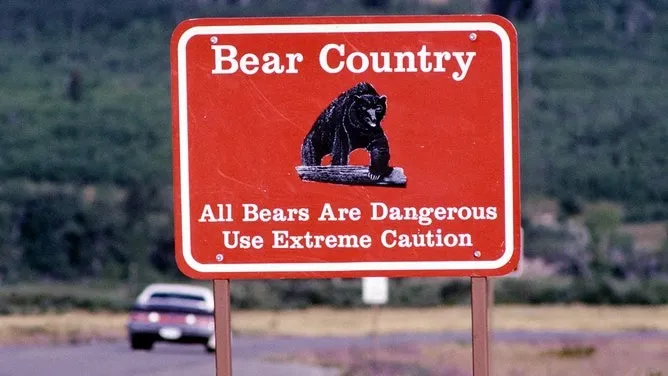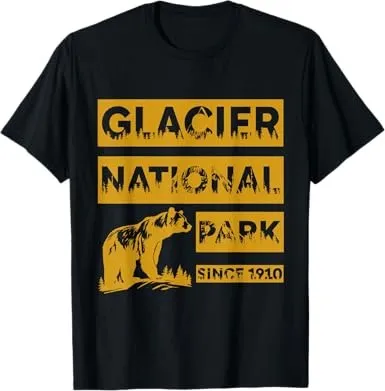Nestled in the heart of Montana, Glacier National Park stands as a testament to the raw beauty and untamed wilderness of North America. Known for its stunning alpine scenery, crystal-clear lakes, and diverse wildlife, the park attracts millions of visitors each year. Among the park’s most iconic inhabitants are its bears—both grizzly and black bears, which roam freely across the vast landscapes. While encounters with these majestic creatures are often a highlight for many visitors, they also come with inherent risks, particularly in the form of bear attacks.
Glacier National Park bear attacks, though relatively rare, have garnered significant attention over the years due to their potential for serious harm.
Bear Attacks In Glacier National Park
Glacier National Park bear attacks are a concern for many visitors. However, it’s essential to understand that while bear encounters do occur, they are relatively rare compared to the millions of people who visit the park each year. The majority of bear interactions are non-aggressive, and most bears prefer to avoid humans altogether.
Historically, there have been a limited number of fatal bear attacks in Glacier National Park. According to reports, there have been approximately ten fatal bear attacks since the park was established in 1910. This statistic may sound alarming; however, when you consider that the park receives millions of visitors annually, the odds of experiencing a fatal bear encounter are extremely low.
Bears are generally shy creatures that prefer to stay away from human activity. They are more likely to be found foraging for food in their natural habitat than seeking out human interactions. That said, it’s crucial for visitors to remain vigilant and informed about bear behavior and safety protocols while exploring the park.
How many bear attacks in Glacier National Park?
The number of reported Glacier National Park bear attacks is relatively low compared to the number of visitors. Between 1910 and 2018, there were only ten recorded fatalities due to bear attacks. The most notable incidents occurred in 1967 when two women were killed by bears in separate attacks. Since then, there have been no fatalities attributed to bear encounters in the park.
In addition to fatalities, several non-fatal bear attacks have occurred over the years. Park officials emphasize that while these incidents can be alarming, they are not indicative of a widespread problem. Instead, they serve as reminders of the importance of understanding bear behavior and practicing safe hiking habits.

Hiker is injured in Glacier National Park Bear Attacks
A 35-year-old man was mauled by a bear while trekking on a well-known path in Glacier National Park, Montana, on Thursday morning, according to the National Park Service.
He was part of a group hiking on the Highline Trail close to the Grinnell Glacier Overlook when they came across a bear, as reported by the Park Service in a news release.
Following the attack, which authorities did not detail, the man, who suffered injuries not considered life-threatening, walked more than a mile in a mountainous region to reach Granite Park Chalet with assistance from park rangers and fellow hikers. He was subsequently airlifted to the park’s southwest edge and transported by ambulance to a hospital in Whitefish, Montana, as stated by park officials.
A popular Glacier National Park trail is closed after a Bear Attack
A popular hiking path in Glacier National Park remains off-limits following a bear attack that resulted in one man’s hospitalization last week.
John Waller, supervisory wildlife biologist, mentioned that “The hiking party was walking into the wind and faced foggy conditions, which could have contributed to the encounter.” He noted their preparedness with bear spray, a satellite communication device, and a first aid kit, as well as the fact that they hiked together and remained calm during the incident.
Park biologists believe the bear involved was likely a male grizzly based on information provided by the man’s companions. Authorities confirmed that no actions would be taken against the bear due to the unexpected nature of the encounter. The trail has been closed between Haystack Butte and Granite Park Chalet since the attack; it will reopen once rangers confirm that the bear has left the area.
While bear attacks are rare across the U.S., this incident marked the second in Montana within a month, following an attack on a 3-year-old girl by a black bear in a tent just north of Yellowstone National Park weeks earlier.
Neither black nor grizzly bears are necessarily more aggressive in the fall, but they do become more active in preparation for hibernation as they try to consume as many calories as possible. It’s estimated that adult black bears aim to eat around 20,000 calories daily before hibernation to sustain themselves, which can lead them to encounter humans as they investigate food smells or garbage.

Are bears a problem in Glacier National Park?
While bears do pose certain risks within Glacier National Park, they are not considered a significant problem when proper precautions are taken. The park is home to both grizzly bears and black bears; however, their populations are well-managed through conservation efforts and regulations set forth by park officials.
The presence of bears contributes to the overall health of the ecosystem by helping control herbivore populations and dispersing seeds through their droppings. This natural balance is essential for maintaining healthy habitats within the park.
That said, it’s vital for visitors to respect wildlife and understand that these animals are wild creatures capable of unpredictable behavior when they feel threatened or cornered. By following guidelines provided by park officials—such as storing food properly and avoiding direct interactions with bears—visitors can minimize risks associated with wildlife encounters.
What are the odds of being attacked by a bear in Glacier National Park?
The odds of being attacked by a bear while visiting Glacier National Park are extremely low—statistically speaking, you have more chance of being struck by lightning than experiencing a fatal bear encounter. Based on historical data from over one hundred million visits to national parks with reported incidents involving bears:
- There have been approximately ten fatal bear attacks since 1910.
- Non-fatal incidents occur sporadically but remain rare compared to visitor numbers.
- Most encounters result from hikers unknowingly surprising bears or getting too close during feeding times.
Understanding these statistics can help alleviate fears surrounding potential encounters while encouraging responsible behaviors when exploring nature.
After delving into the fascinating and sometimes perilous world of bear encounters in Glacier National Park, we hope you’ve gained a deeper appreciation for the park’s natural beauty and the importance of wildlife conservation.
To commemorate your love for this incredible wilderness and to support ongoing efforts to protect both visitors and wildlife, we invite you to check out our exclusive Bear Glacier National Park T-Shirts. These high-quality, eco-friendly shirts not only showcase your passion for nature but also contribute to raising awareness about responsible wildlife interactions.
Each purchase supports initiatives aimed at ensuring the safety and sustainability of Glacier National Park. Click BUY NOW to get your hands on these stylish and meaningful T-shirts, and wear your commitment to nature with pride!


